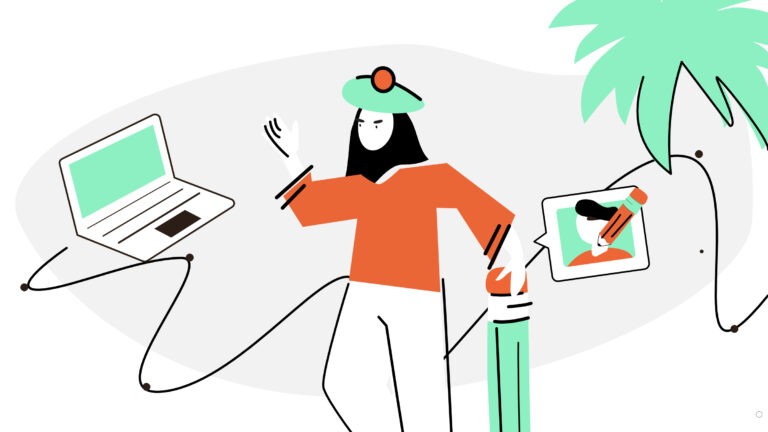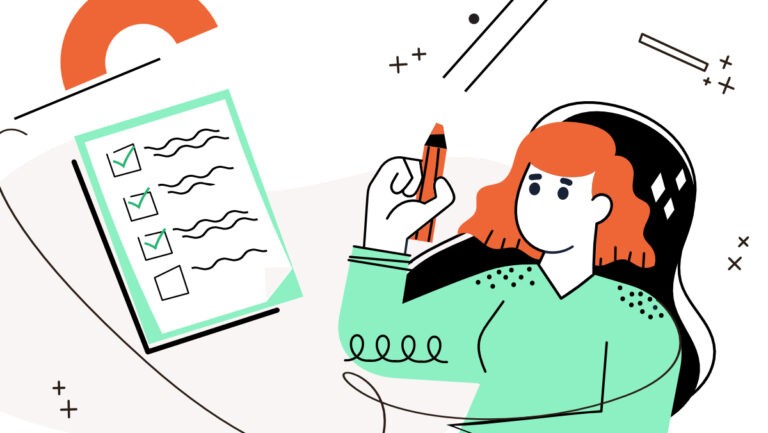At the Gingersauce, a professional tool for creating brand books, our mission is to educate on the importance of visual presentation and company branding. In line with it, we have decided to start a series of interviews with talented designers we personally follow, to see what their thoughts are on the topic: what tips and tricks they can share, what lifehacks they learned pursuing a career in design, what they would change if they could go back in time.
Are you a designer and have something to share? Hit us up at [email protected] and maybe you’ll be a hero of the next interview 🙂
“I hope I can inspire other artists and brighten people’s day”
Yes, the person of the month rubric is finally back! We took a little break just to look for those beautiful and talented people to interview. And we found a lot!
For today’s post, we were extremely happy to meet Isabela Humphrey: an Illustrator and Graphic Designer based in Mexico. Using her experience in fashion, she creates vibrant and colorful pieces that will definitely catch your eyes. Isabela uses her skill and talent to bring attention to social issues, and help other artists to do the same.
Isabela has experience working with giants such as Facebook, The Guardian, and Harper Collins. She currently works as a freelance artist for Apartment Therapy and The Kitchn.
The colorful prism
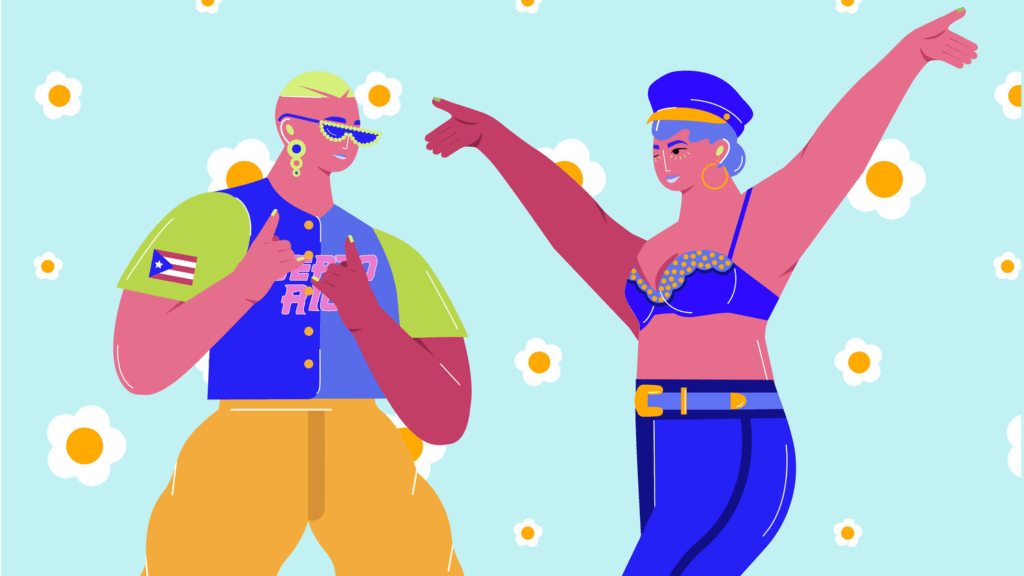
Finding a style is not easy, and a 1-minute task. Isabela shares her view on her own style, and the path she’s walking.
How did you find your style of illustration? Did it change a lot with time?
This is a tricky question! I feel like I am still trying to find my style and voice. My illustration work has definitely changed so much in the past two years, but I do find myself looking back at old work to see if there are any elements that I can use in my newer pieces. I think I am close to getting to a “style” that I really love, but I know I will keep developing it further!
What tips can you give to other designers on how to find their unique style?
I know this is cliche, but practice, practice, practice really is the key!

Looking at Isabela’s color choices for her illustrations, it’s obvious that they weren’t chosen by accident.
Do you use psychological tricks in your artworks? Maybe something behind those vibrant colors you always use?
Through the colors I use, I hope to make the viewer/audience feel joy. For me, I always feel happy when I see bright colors.
In general, do you use color psychology in your visuals?
If using bright colors to elicit emotions, then yes 🙂
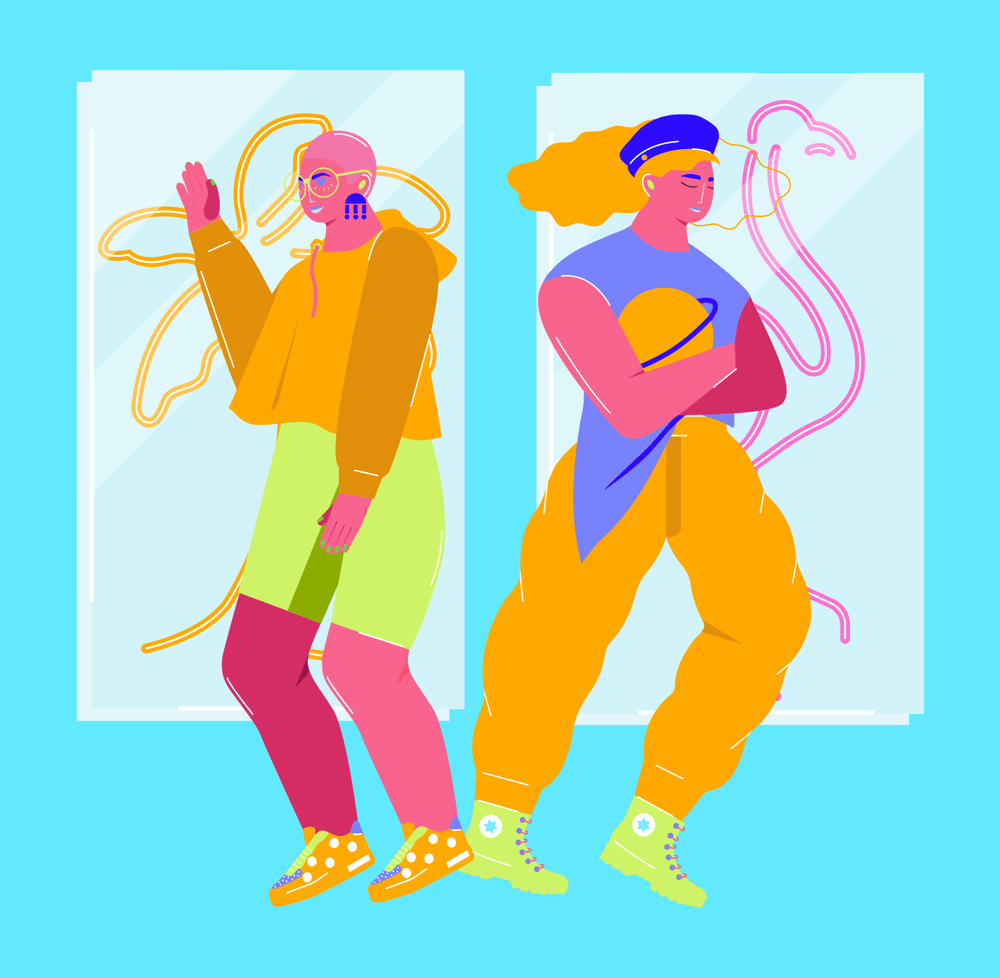
We mentioned before that Isabela has experience working in fashion design: it’s fascinating to learn how it influences her illustration career today.
We also read that you worked in fashion design, can you tell a few words about your experience and how it helps you now?
I can definitely say that fashion illustration proportions, knowledge of color, and creating prints have influenced my work greatly. Even though my proportions are much distorted than my previous fashion work, my fashion illustration classes helped me learn how to create a balance when creating these unique figures. When I was working as a fashion designer, I helped create prints and within those prints, I needed to make sure the color was balanced correctly to look great on fabric. I apply that same knowledge when creating prints on my characters.
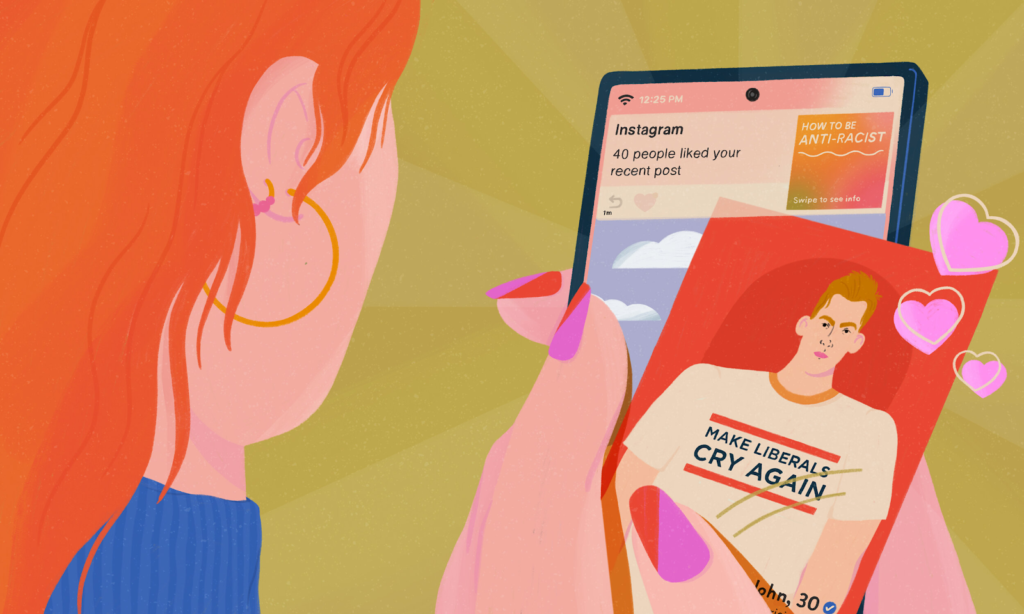
Inspiration is a painful topic for every creative. It’s always helpful to know some additional resources to draw your inspiration.
Where do you take inspiration for your designs?
I look a lot at street style as well as editorial shoots. I also look at my own wardrobe and the colors I see around me in the city.

The client cooperation, from step 1 to handing out the final artwork: what does it look like?
Do you have a special routine that you use to work with each client?
I always start with a video call once the project is confirmed to make sure we are both aligned before I get started on any part of the project/illustration. I then ask the client to reference any piece of my work that they like so I can get an idea of the style they are looking for.
After that, I will work with them to create a color palette if there isn’t already one to reference. Once those steps are completed, I will create 1-2 options in a rough drawing so the direction is confirmed before starting the final piece. When I start on the final piece, I always check in midway to make sure the client is happy!

Sometimes the success of the entire project relies on the client-designer communication. Care to share some of your tips, Isabela?
What top 3 mistakes can you highlight regarding the communication with clients?
1. Not having check-in points
2. Not creating a time-line
3. Misnaming files or forgetting to double-check the pieces you are delivering

Automating the design process is a painful topic in the design community. Let’s see what Isabela thinks on the matter.
What do you think: designers should pay more attention to automating processes or it still should be more about creativity?
I think these go hand in hand. It is really important to have processes in place to make sure you are able to be successful with the project and finish on schedule.

A huge part of being a designer is creativity. Can it be developed, or is it a talent you’re born with?
What do you think are the best techniques that develop creative thinking?
I am not quite sure, but for me taking a step back from screen time really helps me feel more creative! Also making sure you get enough sleep is definitely helpful and necessary to fuel creativity.

Every designer has a project they consider to be their highest milestone hit. What’s Isabela’s?
You are active in social life, what projects are you the proudest of?
I definitely am proud of the project I did for Facebook and a project I just finished for Refinery 29.
At Gingersauce we truly believe that graphic designers are not just doing their jobs. They all have a bigger goal to follow.
What do you think is your mission as a designer?
I hope I can inspire other artists and brighten people’s day!
…and since the design is a part of a bigger mission, we won’t say it’s an easy industry to work in.
What is the most challenging part for you in the designing process?
For me, the end of the project is the hardest. A lot of the times I will be 95% finished, but I will start changing colors, etc. and then I get incredibly stressed!
One of the biggest challenges a designer faces is public commentary, and the strain to always keep adding new visuals to the portfolio.
What do you think is the main problem with the design/designers nowadays?
Not sure if this is a big problem, but for me personally social media makes me think and others that we have to create something for social media all the time. A while back I was trying to create something new for Instagram and it really burned me out!
And we’re now getting to our favorite topic, the design presentation. If you’re still not sure about the right way to present your works, keep on reading, and learn a few tips from a professional illustrator.
How do you think the presentation of visuals influences the communication with a client and their attitude to design results?
Presentations are always really helpful especially if there are multiple assets to deliver.
I usually don’t create presentations for single pieces, but I think it is really impactful to present multiple pieces in a keynote/PowerPoint/pdf to present the color palette, mood board, and assets you create all together to show how you created a “story”.
How designers should definitely not present their designs?
Designers should always make sure their files are named according to client/project subject/title especially if working with multiple assets.
Starting a career in design can be exhausting. Difficult to fit in, to find a unique style, to put yourself out there. Check the advice on how to fit in better, that Isabela shares after years working in the industry.
What advice would you give to a beginner yourself?
I would say to not compare yourself to others! When I do this to myself, I find it really hard to work which is not helpful for my illustration career.
Another thing is to find an art community or art friends to talk to! Whenever I get stuck or I feel like I am an imposter, it helps me so much to speak to other artists about how I am feeling!
…Thanks, Isabela!
It was an honor to have you, Isabela! We genuinely think that your works are marvelous and meaningful. By joining us today, you offered your advice to newbies, and shared the experience you earned – that means a lot! We had a great time, hopefully, you did too.
Guys, make sure to follow Isabela everywhere, she’s super skilled (we’re sure you already know this):
How can Gingersauce help you present your visuals?
Gingersauce is a tool for creating brand books that combine automation and creativity. It’s a professional tool – meaning, it won’t do a half-baked job, leaving you with a mediocre result.
Jiaqi says – a nice layout helps the clients understand the process behind your work better.
Gingersauce will help you gather all your prototype visuals, make a professional presentation, and ensure you’re in sync with your client.



